
THEORETICAL AND COMPUTATIONAL FLUID DYNAMICS
metrics 2024
Innovating Fluid Mechanics Through Rigorous Research.
Introduction
THEORETICAL AND COMPUTATIONAL FLUID DYNAMICS, published by SPRINGER, stands at the forefront of scientific discourse in the fields of fluid mechanics and computational methods. With an impressive impact factor reflecting its significance and reach, this journal has consistently maintained a Q1 ranking across multiple categories, including Computational Mechanics and Condensed Matter Physics as of 2023. Covering a rich scope of theoretical research and computational analysis, it aims to advance the understanding of fluid flow and transfer processes, making it an essential resource for researchers, professionals, and students alike. The journal, with its historical archive extending from 1989 to 2024, not only contributes to foundational theories but also integrates applied research and emerging computational techniques, thus facilitating innovation within the discipline. As a result, THEORETICAL AND COMPUTATIONAL FLUID DYNAMICS serves as a crucial platform for disseminating impactful findings that shape future advancements in fluid dynamics research.
Metrics 2024
 0.96
0.96 2.20
2.20 2.50
2.50 66
66Metrics History
Rank 2024
Scopus
IF (Web Of Science)
JCI (Web Of Science)
Quartile History
Similar Journals

Applied Mathematics-A Journal of Chinese Universities Series B
Championing High-Quality Research in Applied MathematicsApplied Mathematics-A Journal of Chinese Universities Series B is a reputable journal published by ZHEJIANG UNIV PRESS, dedicated to advancing the field of applied mathematics. With an ISSN of 1005-1031 and an E-ISSN of 1993-0445, this journal has consistently provided an insightful platform for researchers to publish innovative studies, theoretical advancements, and practical applications that bridge the gap between mathematics and real-world problems. Operating under the rigorous academic standards characteristic of its category, the journal currently holds a Q4 quartile rank in Applied Mathematics and is positioned at the 30th percentile among its peers in Scopus rankings. Encompassing a publication range from 1993 to 2024, it promises to foster collaboration and knowledge exchange among mathematicians and interdisciplinary scholars, ensuring that high-quality research reaches a global audience. Although the journal follows a traditional access model, its significance in the academic community lies in its commitment to facilitating the dissemination of critical mathematical findings that address complex contemporary issues.

Journal of Mathematical Fluid Mechanics
Bridging Theory and Application in Mathematical Fluid MechanicsThe Journal of Mathematical Fluid Mechanics, published by SPRINGER BASEL AG, is a prestigious academic journal dedicated to the study of fluid dynamics through the lens of mathematics. With its ISSN 1422-6928 and E-ISSN 1422-6952, this journal has firmly established itself in the academic community since its inception in 2004, converging knowledge across various mathematical disciplines until 2024. Recognized in the top Q1 quartile rankings for Applied Mathematics, Computational Mathematics, Condensed Matter Physics, and Mathematical Physics as of 2023, it reflects a strong commitment to high-quality research and innovation. The journal features a variety of research articles, reviews, and theoretical frameworks, serving as an essential resource for researchers, professionals, and students eager to explore the mathematical principles underlying fluid mechanics. While it does not offer open access, the impact of its contributions resonates within interdisciplinary fields, advancing both theoretical insights and practical applications.

Computational and Mathematical Methods
Fostering Collaboration for Groundbreaking Computational ResearchComputational and Mathematical Methods is a dynamic peer-reviewed journal published by Wiley-Hindawi, focusing on innovative research in the fields of computational mathematics, mechanics, and theory. Since its transition to an Open Access format in 2022, the journal has enhanced its accessibility to researchers and practitioners globally, providing a platform for the dissemination of high-quality studies that contribute to emerging developments in mathematical modeling and computational techniques. Based in the United Kingdom, this journal is committed to fostering collaboration amongst scholars, evidenced by its rankings within Scopus: Q3 in computational mathematics, computational mechanics, and computational theory and mathematics, reflecting its relevance and influence within these critical fields. With an emphasis on interdisciplinary studies, Computational and Mathematical Methods is an essential resource for researchers, professionals, and students seeking to expand their knowledge and apply cutting-edge methodologies to practical challenges.

Applications of Mathematics
Transforming Ideas into Mathematical SolutionsApplications of Mathematics, published by SpringerNature, is a respected journal based in the Netherlands that provides a platform for innovative research in the field of applied mathematics. Since its inception in 1997 and with a convergence ongoing until 2024, the journal supports the dissemination of high-quality scholarship, although it currently holds a Q4 category ranking in the applied mathematics category, which reflects its niche importance in the academic community. Researchers and professionals in the field can access a diverse array of applied mathematical techniques and their practical applications, contributing to advancements across various disciplines. While the journal does not operate under an open access model, it is indexed and ranked in Scopus, where it holds a rank of 419 out of 635, placing it in the 34th percentile. This underscores its value and relevance in the global research landscape.
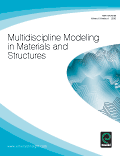
Multidiscipline Modeling in Materials and Structures
Fostering collaboration to elevate materials and structural analysis.Multidiscipline Modeling in Materials and Structures, published by EMERALD GROUP PUBLISHING LTD, serves as a vital platform at the intersection of diverse fields including materials science, mechanical engineering, and modeling and simulation. Since its inception in 2005, this journal has gained recognition for its commitment to advancing knowledge and innovation within these disciplines, boasting a commendable Q3 categorization across multiple fields as of 2023. With a robust Scopus ranking that places it in the top 60th percentile for both mechanical engineering and mechanics of materials, it stands as a credible source for researchers and practitioners seeking to stay informed on the latest methodologies and applications. The journal emphasizes the importance of collaborative approaches to complex problems in materials and structural analysis, aiming to foster interdisciplinary dialogue and generate impactful research outcomes. Although currently not open access, the journal offers subscription options that ensure access to cutting-edge studies and critical reviews relevant to professionals and students alike. Engaging with this journal not only enriches one’s understanding of the field but also contributes to the ongoing discourse and development of innovative solutions in materials and structural modeling.
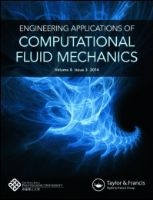
Engineering Applications of Computational Fluid Mechanics
Exploring the Frontiers of Computational Fluid MechanicsEngineering Applications of Computational Fluid Mechanics is an esteemed journal published by Taylor & Francis Ltd that serves as a vital resource for researchers, professionals, and students in the field of fluid mechanics and its computational applications. With an ISSN of 1994-2060 and an E-ISSN of 1997-003X, this journal has established its reputation through its rigorous peer-review process and commitment to Open Access since 2015, facilitating widespread dissemination of cutting-edge research. Based in the United Kingdom, the journal is indexed in leading databases and has achieved a significant impact in its categories, ranking in the top quartile (Q1) for both Computer Science (miscellaneous) and Modeling and Simulation as of 2023. Notably, its Scopus rankings place it in the top 4% of Mathematics/modeling and simulation, highlighting its importance in advancing knowledge and innovation within the discipline. The journal invites contributions that explore both theoretical and practical aspects of computational fluid dynamics, fostering collaboration and intellectual growth within the community.

ACTA MECHANICA SINICA
Pioneering Insights in Computational MechanicsACTA MECHANICA SINICA is a prestigious journal published by SPRINGER HEIDELBERG that has been a cornerstone in the field of mechanical engineering and computational mechanics since its inception in 1985. Based in Germany, this leading publication is internationally recognized for its high impact, holding a Q1 ranking in both Computational Mechanics and Mechanical Engineering as of 2023. It is positioned prominently within the academic community, evidenced by its respectable Scopus rankings—#21 in Computational Mechanics and #159 in Mechanical Engineering, both within the 76th percentile. Researchers and professionals alike turn to ACTA MECHANICA SINICA for cutting-edge research, innovative methodologies, and insights that drive advancements in the discipline. Although the journal is not open access, its rigorous peer-review process ensures the publication of high-quality, impactful research that is essential for scholars and practitioners aiming to stay at the forefront of mechanical engineering advancements.
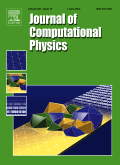
JOURNAL OF COMPUTATIONAL PHYSICS
Unveiling New Dimensions in Applied MathematicsJOURNAL OF COMPUTATIONAL PHYSICS, an esteemed publication from ACADEMIC PRESS INC ELSEVIER SCIENCE, serves as a premier platform in the field of computational physics and its interdisciplinary applications. Since its inception in 1966, the journal has provided invaluable insights and significant advancements in areas such as applied mathematics, numerical analysis, and modeling and simulation. With a robust impact factor and ranking in the top quartile across various related categories, including Q1 in Applied Mathematics and Physics and Astronomy, it is essential reading for researchers and professionals aiming to stay at the forefront of computational techniques and methodologies. Although the journal is not open access, it remains highly regarded with a reputation for rigorous peer review and high-quality publications. As the field continues to evolve, the JOURNAL OF COMPUTATIONAL PHYSICS highlights innovative research that not only advances theoretical constructs but also offers practical applications in scientific and engineering domains. For scholars and students, this journal embodies a critical resource for deepening their understanding and fostering dialogue within the scientific community.
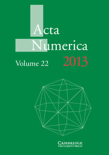
ACTA NUMERICA
Exploring the Depths of Computational Techniques.ACTA NUMERICA, published by Cambridge University Press, stands as a premier journal in the fields of Mathematics and Numerical Analysis since its inception in 1992. With an impressive Scopus ranking that places it in the 99th percentile and a prestigious Q1 category status in both Mathematics (miscellaneous) and Numerical Analysis for 2023, it has established itself as a leading platform for cutting-edge research. The journal's scope encompasses a wide range of numerical methods and computational techniques that address complex mathematical problems, making it an essential resource for researchers, professionals, and students alike. Although it does not provide Open Access, its commitment to quality and innovation in the mathematical sciences continues to attract submissions from around the globe. Published in the United Kingdom, ACTA NUMERICA remains a vital channel for disseminating significant advancements in numerical methodologies.
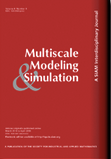
MULTISCALE MODELING & SIMULATION
Innovating simulations for a complex world.MULTISCALE MODELING & SIMULATION, published by SIAM PUBLICATIONS, is a premier journal dedicated to advancing the field of multiscale modeling across various domains including chemistry, computer science, ecological modeling, and physics. With an impressive impact factor, this journal consistently ranks in the Q1 category for diverse disciplines, underscoring its outstanding contribution to the scientific community. The journal's scope encompasses innovative simulation techniques and theoretical advancements that aim to bridge the gaps between different scales of physical phenomena, making it an essential resource for researchers, professionals, and students alike. Though it does not currently offer open access, its rigorous peer-review process ensures that only the highest quality research is disseminated. Covering a dynamic range of topics from 2003 through 2024, MULTISCALE MODELING & SIMULATION remains a vital platform for interdisciplinary collaboration and exploration in the rapidly evolving landscapes of science and engineering.